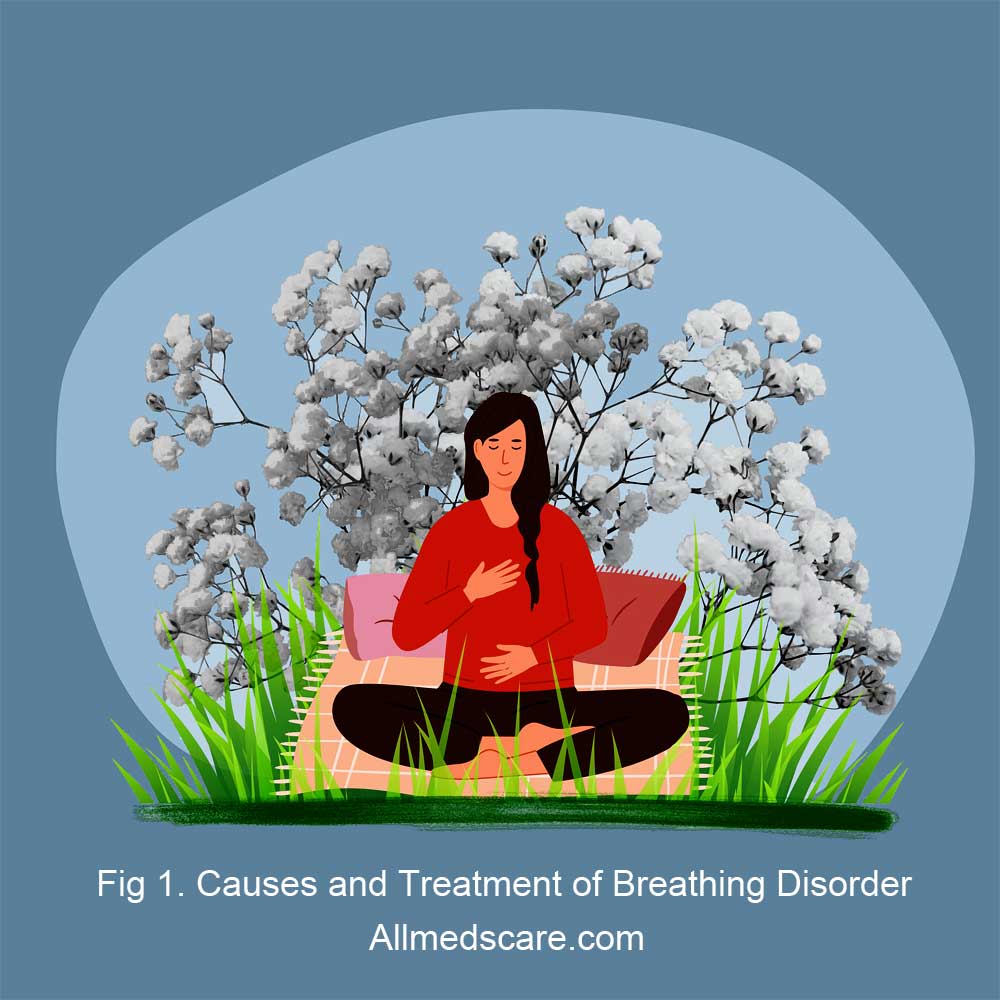
Understanding the Causes and Treatment of Breathing Disorder
Breathing disorders are a range of conditions that affect your ability to breathe. These can include asthma, chronic obstructive pulmonary disease (COPD), sleep apnea, and other lung diseases. Breathing disorders can make it difficult for you to breathe or to get enough oxygen. People who suffer from these conditions may experience shortness of breath, wheezing, tightness in the chest, pain in the chest, coughing fits, and fatigue. To successfully treat breathing disorders, it is crucial to understand their underlying causes.

Causes of Breathing Disorder
The main cause of breathing difficulties can be caused by environmental factors. Pollutants like Smoke and other airborne pollutants, can irritate the airways and cause inflammation and make breathing difficult. Inhaling mold spores or chemical fumes may also trigger a reaction cause breathing difficulty. Those who live in poor air quality areas are especially prone to developing respiratory problems due to increased exposure to these pollutants.
Breathing issues may also be affected by genetic factors. Some diseases, such as cystic fibrosis, are caused by genetic defects that affect how mucus is produced by the body’s cells and tissues. This excessive mucus production can cause blockages in the lungs that make it difficult for a person to breathe normally and get enough oxygen. Other genetic disorders like sickle cell disease can also increase a person’s risk of having breathing problems due to problems with red blood cells delivering enough oxygen throughout the body.
Finally, medication side effects should be considered when looking at possible causes of a person’s breathing difficulty. Many drugs used for various medical treatments are associated with lung dysfunction or a reduction in the ability of sufferers to take deep breaths properly without becoming short of breath quickly afterward. For example, include corticosteroids and some cancer drugs that target specific gene pathways involved in the repair process of lung tissue. But if they are inadvertently used rather excessively or inappropriately, respectively, they cause damage over time to patients who are not suitable for their use.
Symptoms of Breathing Disorder
A productive cough that creates mucus, chest pain or tightness, frequent sighing to take deeper breaths due to trouble with normal inhaling and exhaling, and exhaustion are symptoms of breathing disorders. People who have these conditions might find it difficult to perform physical exertion like running or climbing stairs. In some cases, a person with a breathing disorder may experience anxiety because they worry that they will not be able to breathe properly in certain situations.
In addition to the symptoms listed above related to breathing difficulties, there are other symptoms of breathing problems that should be considered when evaluating a person for a possible disorder. Bluish skin discoloration is an indicator of oxygen deficiency due to lung disease; this is called cyanosis. Another indication that something is wrong with the patient’s respiratory system is a rapid heartbeat. People who have an infection that causes inflammation in the lungs or airways may also experience fever.
Treatments for Breathing Disorder
Medications like bronchodilators and corticosteroids are frequently used in medical treatments for breathing problems to reduce inflammation and open up the airways. Oxygen therapy may also be used when a patient’s underlying lung disease prevents them from breathing in enough oxygen on their own. Surgery may be required in extreme circumstances to remove damaged tissue or fix structural issues that are causing difficulty in breathing problems.
Alternative treatments for respiratory disorders may include lifestyle changes such as quitting smoking or avoiding alcohol, If these substances are identified as triggers for respiratory symptoms. Yoga and other relaxation exercises can be used to handle the anxiety that is brought on by feeling short of breath or finding it difficult to take deep breaths. Certain dietary supplements containing herbs such as eucalyptus and peppermint are believed to provide some relief from chest tightness and other symptoms associated with breathing problems.
Inhalers such as Salbutamol Inhalers are another popular treatment option for those who suffer from asthma and other forms of chronic obstructive pulmonary disease (COPD). Through inhalation, these devices deliver medicine directly to the lungs, which immediately reduces inflammation of the respiratory tract. As a result, patients have more freedom to breathe properly. When the airway is obstructed by swollen tissue, normal breathing is possible without obstruction. Used according to individual severity level, or routine daily life situations.
Managing Stress to Minimize the Impact of Breathing Problems
To manage stress related to breathing issues, relaxation methods like progressive muscle relaxation, deep breathing, and guided imagery can be very beneficial. Each of the main muscle groups is first tensed, then released to allow the others to rest one at a time, which is known as progressive muscle relaxation. Deep breathing increases endorphins, which are natural feel-good hormones that lower anxiety. It also helps your heart rate calm down and lets more oxygen into your lungs. In guided imagery, you concentrate on positive images or scenarios to reduce stress and change your mindset away from fear or worry about the condition.
With the help of mindfulness meditation, we can notice physical sensations like a tightness in our chest or trouble breathing without giving them a negative connotation. Mindfulness meditation encourages us to become aware of our present-moment experiences without judgment. By doing this, we develop the ability to accept rather than resist what is happening, which lowers anxiety levels in general and improves the management of symptoms when they appear.
Counseling and therapy often provide an essential supportive environment for people struggling with breathing disorders caused by their ability to identify triggers and explore underlying feelings related to the condition. Along with providing coping strategies that may include cognitive behavior therapy (CBT). Through CBT people achieve the tools they need to change thought patterns related to distress while developing less destructive replacement behaviors. This type of approach has been highly effective in treating anxiety-related issues as well as depression which can often accompany chronic health conditions like asthma or COPD.






